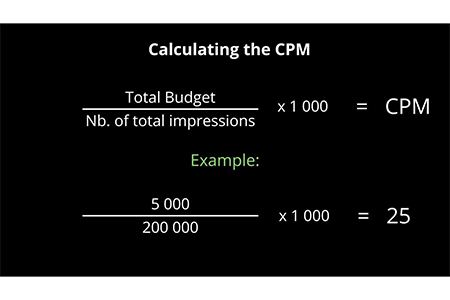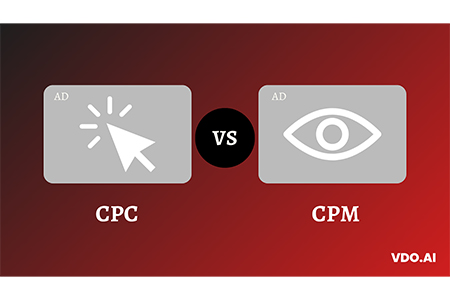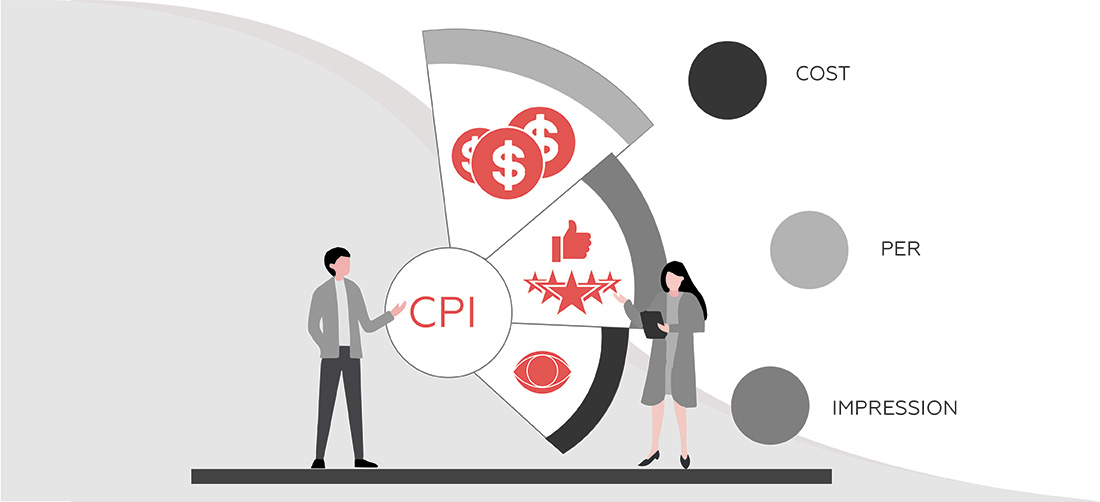Table Of Content
- 1. What is Cost Per Mille (CPM)?
- 2. How Do You Calculate CPM?
- 3. How does CPM work?
- 4. CPM Calculator
- 5. Importance of Cost Per Mille
- 6. Best Practices for Optimizing Your Ad Spend Effectively
- 7. Difference Between CPC and CPM
- 8. Common Challenges with CPM
- 9. Role of CPM in Advertising
- 10. Conclusion
What is Cost Per Mille (CPM)?
Cost Per Mille (CPM) is one of the most critical performance measures of online advertising regarding the cost per 1,000 impressions. It is derived from the Latin mille, which means thousand, hence expressing how CPM considers thousands of dollars to convey advertising spent per thousand counts. This is very important for advertisers as it allows them to analyze how much they pay per exposure. The CPM model allows for mass audiences to get a higher CPM as the end goal is to reach as many people as possible and not drive traffic through clicks, which proves effective for brand visibility campaigns. Advertisers can use a wide variety of tools to track CPM, which will give them a good picture of their campaign's effectiveness and budget management.
How Do You Calculate CPM?
CPM is calculated as follows. For example, if the money spent on an ad campaign is INR 500, and it generates 100,000 impressions, then (500/100,000)*1,000 = INR 5.
This formula gives the advertisers insight into the value for money they are getting and helps them ensure that they are getting maximum value for their ad spend.
How does CPM work?
CPM, or 'Cost per Mille,' is a digital advertising pricing model where advertisers pay for 1,000 impressions of their ad, whether or not any users take action. This kind of pricing model fits well with campaigns seeking to build brand awareness rather than drive instantaneous response. Since CPM is based on impressions, it aims to achieve maximum exposure. Ad rates are subject to variation based on targeting, platform, and time of year. Advertisers use CPM to gauge how cost-effective their ad campaign is, thereby aiding year-round budget management and optimization.
CPM Calculator
CPM calculator is one of the most effective tools for the advertisers to know how much they would be paying for 1,000 impressions. CPM will be calculated by putting in the total cost of the campaign and expected impressions. This tool can help businesses budget more accurately and foresee how much their advertising strategies will cost them. You can then make adjustments to your targeting, ad placement, or campaign duration to make sure you stay within your marketing budget by knowing your CPM beforehand. It's very easy to use a CPM calculator to move forward with campaign planning while aligning costs for advertising with goals.

Importance of Cost Per Mille
COST PER MILLE, CPM is most important to an advertiser's priorities that concern visibility and exposure. Since CPM is based on the number of impressions, instead of direct interaction, such as a click, a company will be able to send messages about themselves to a large audience while it monitors an average predictable cost. Such a model is excellent for brand-building campaigns directed toward awareness and recognition. Keeping an eye on CPM gives advertisers a level of insight into whether their dollars are working hard enough to obtain that much exposure. With it, they can measure the cost-benefit ratio of each advertising channel and optimize their strategy over time.
Best Practices for Optimizing Your Ad Spend Effectively
Attempts to enhance ad spending will concentrate instead on the best venue for its presentation, associated targeting to those potential customers or leads, and in-field monitoring of campaign performance. There are such things as CPM calculators to know whether one is measuring true efficiency, which is especially important in one-to-one matching to cost per 1,000 impressions. Do not forget the need to try other creatives and placements while accounting for whichever ends up getting the most impressions for the cheapest cost. You must always have a regular assessment of CPM rates to decide, based on data, to enhance ROI. Being up to date on market changes and audience behavior also helps your advertising dollar stretch further and work harder.

Difference Between CPC and CPM
CPC and CPM are models of pricing for digital advertising paid based on clicks or impressions, respectively. Advertisers pay for their advertisements every time a user performs a click on the advertisement in the case of cost per click. Therefore, it is the most appropriate for performance-based campaigns. The estimated cost for every one thousand impressions is calculated in case of cost per mille. This is most suitable for advertising aimed at creating awareness. Whereas cost per click is more action-oriented, cost per mille is more into reaching audiences. It aids in the effective decision-making of the businesses considering their advertising objectives.

Common Challenges with CPM
The CPM might not necessarily come with certain hitches. The first and foremost major challenge is whether the impressions one has paid for are being shown to the target audience. One cannot be sure to say that if an ad has been pressed or shown to 1,000 people, it is not going to motivate them to show an interest in your brand. CPM prices, on the other hand, differ so drastically on the various platforms that one's resource planning becomes almost impossible. Besides, there is always the risk of overshooting budgetary provisions when you invest in poorly performing ads, thereby practically wasting your budget. Tracking effectiveness in the implementations of CPM will require having a close watch on the campaign and making adjustments wherever necessary for the best results.

Role of CPM in Advertising
High mind-blowing advertising relies on an overall public CPM, which characterizes a paramount model in digital advertising. Instead of focusing on interaction rates, CPM keeps an eye on the viewer's impression cost at which advertisers could reach huge masses. This is one of those models widely used for display ads, social media, and video ads where reach is everything. CPM guarantees budgeting with a clear overview of payments done for impressions. Although it will not promise any action from users, it keeps the chance open for the building of a brand presence that can lead to actions later.

Conclusion
To wrap it up, understanding CPM is crucial for you as a digital marketer. It serves as a basis for determining how much it would cost you to reach around 1,000 potential customers and subsequently plan for the best way to spend for advertising. The metric CPM does provide meaningful insights towards evaluation whether it is being used for brand awareness purposes or determining the cost efficiency of your campaigns. Calculating and adjusting CPM would ensure that the advertising budget is directed toward the most productive strategies. Hence, success in marketing can significantly come from CPM, with continuous monitoring and optimization.
FAQs
Cost Per Mille, or CPM, refers to the price an advertiser pays for 1,000 impressions of their ad, where "Mille" in Latin refers to a thousand.
Not necessarily; simply because it has a high CPM does not mean it is better performing. CPM might be higher in more desirable advertising spaces, yet the crux of it all is whether the impression quality and targeting warrant the price.
CPM can be lowered if the target audience becomes the focus, ad creatives are optimized, placements are varied, and the most efficient platforms get the most focus in terms of performance.
The finance, technology, health, and insurance industries tend to have the highest CPMs, as each is highly competitive with very lucrative target audiences.
Yes, setting a maximum CPM on most advertising platforms allows you to manage costs and prevent overspending during your campaigns.
CPM is usually popular in mobile advertisement because it directs advertisers to manage their costs and also maximize visibility in advertisements in mobile apps, websites, and those in-app ads.
The average CPM varies by industry. For instance, the CPM for finance and insurance industries may fall between twenty and fifty dollars but tends to be lower in the entertainment and retail sectors.
Viewability: Whether or not an ad can be seen by the user would mean that in such cases wherein such ads can be fully seen by users will most likely hold much more CPM than those ads do not because advertisers value them more.
Indeed, at CPM, you can get a negative ROI supposing specific ad impressions do not lead towards the desired activity or lead, which means paying for visibility with little or scant results.



